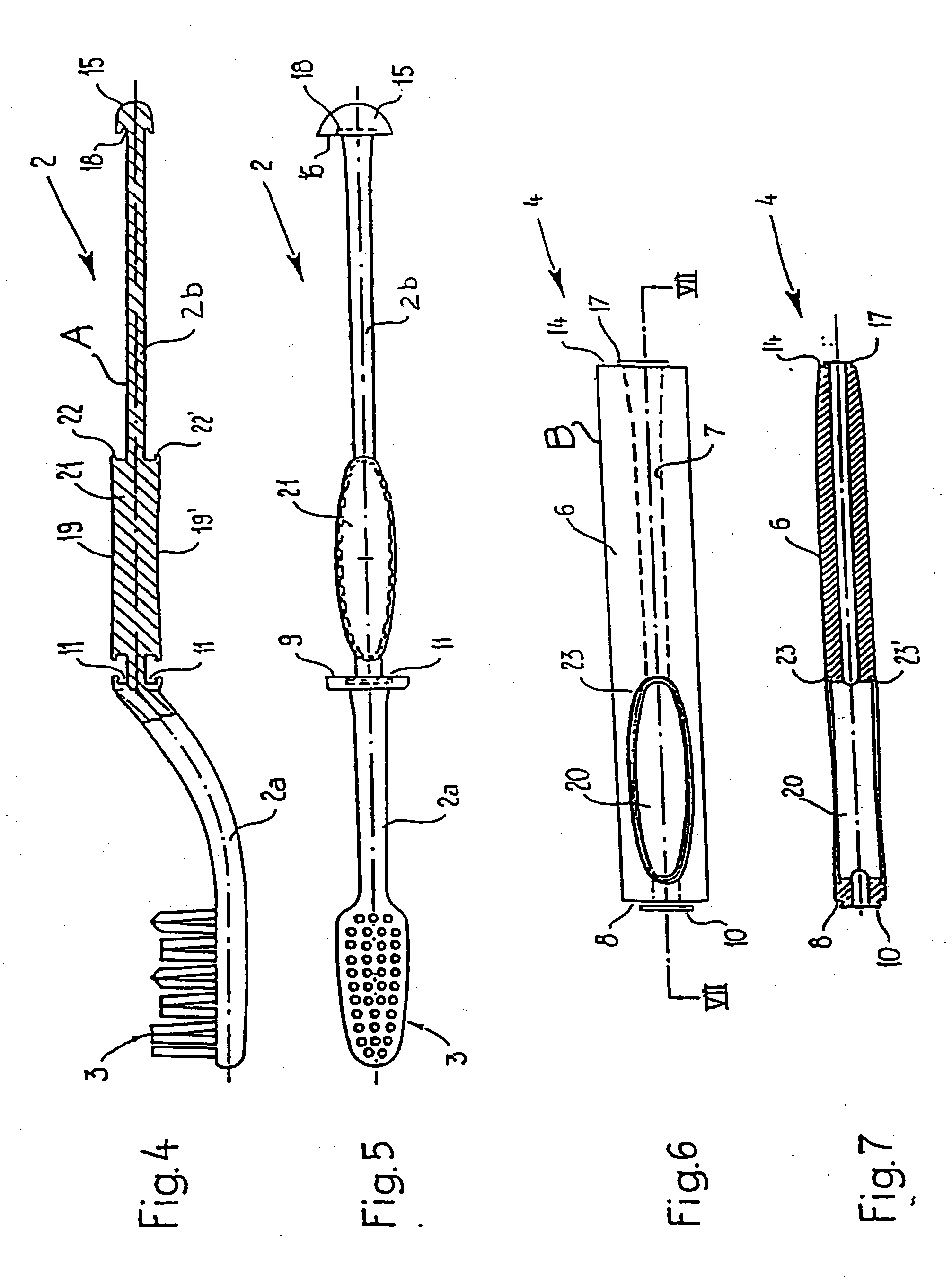Plastic object for use in personal hygiene
a plastic object and personal hygiene technology, applied in the field of plastic objects, can solve the problems of restrictions in the selection of plastic materials and consequently in the design of the toothbrush, and restrictions in the selection of materials for the two parts, and achieve the effect of different shrinkage behavior and easy attainment of firm shrinkag
- Summary
- Abstract
- Description
- Claims
- Application Information
AI Technical Summary
Benefits of technology
Problems solved by technology
Method used
Image
Examples
Embodiment Construction
[0025] According to FIGS. 1 to 3, a toothbrush 1 has a first molded part 2, which bears a brush head 3 in its front region 2a. The first molded part 2, consisting of a plastic material A, is enclosed over a portion of its length, to be specific its rear handle region 2b, by a second molded part 4, consisting of a plastic material B, and is non-positively joined to the latter in the manner of a shrink fit. The plastic materials A and B are plastic materials of a kind which do not bond with one another during the injection-molding operation at the surfaces where they touch.
[0026] For better illustration, the two molded parts 2, 4 are represented separately from one another in FIGS. 4 to 7. The two molded parts 2, 4 have—as described further below—in the region where they touch diametrically opposite projections and recesses engaging in one another, by means of which a positive fit of the two molded parts 2, 4 is realized in addition to the non-positive fit of the same. It goes withou...
PUM
| Property | Measurement | Unit |
|---|---|---|
| plastic | aaaaa | aaaaa |
| degree of shrinkage | aaaaa | aaaaa |
| transparent | aaaaa | aaaaa |
Abstract
Description
Claims
Application Information
 Login to View More
Login to View More - R&D
- Intellectual Property
- Life Sciences
- Materials
- Tech Scout
- Unparalleled Data Quality
- Higher Quality Content
- 60% Fewer Hallucinations
Browse by: Latest US Patents, China's latest patents, Technical Efficacy Thesaurus, Application Domain, Technology Topic, Popular Technical Reports.
© 2025 PatSnap. All rights reserved.Legal|Privacy policy|Modern Slavery Act Transparency Statement|Sitemap|About US| Contact US: help@patsnap.com



